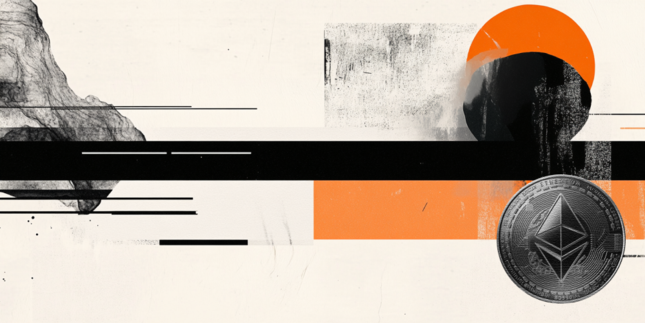The gradual weakening of the German labour market continued in March, suggesting that any recovery in private consumption is still not in sight.
In March, German unemployment decreased by 22,100, lowering the unemployment figure to 2.967 million. But don’t be mistaken; this is not a sign of strength but rather weakness. It is the weakest March number since the financial crisis. One year ago, unemployment was still 200,000 people lower. Seasonally-adjusted unemployment increased by 26,000, bringing the unemployment rate to 6.3% from 6.2% in February.
Labour market in soft landing
The German labour market has been in a very gradual soft landing since 2022. While the number of unemployed has increased from 2.2 million in May 2022 to almost 3 million again currently, the number of vacancies has come down since late 2021. The fact that until recently, employment was at record highs can be explained by migration flows. However, the rise in employment has not been enough to prevent the current private consumption slump. Why? A large part of the recent job growth took place in part-time and low-wage jobs.
Labour market weakening will continue, limiting any upside for private consumption
Looking ahead, the gradual weakening of the labour market looks set to continue. Recruitment plans in both industry and services continue to come down, and the ongoing announcements of potential cost-cutting measures in the automotive and other industries will push up unemployment. This may not happen overnight because of German labour laws, but could be seen gradually over several years. It's important to mention, too, that the number of bankruptcies has been increasing by low double-digit percentages since the summer of 2023. It is easy to see how this trend will also push up unemployment. Today’s bankruptcy is tomorrow’s unemployment.
On a more positive note, the impact of demographics on the labour market and labour shortages should prevent a sharp worsening. Still, even if the increase in the number of unemployed is gradual, don’t forget that the risk of an underlying loss in disposable income and broader economic prosperity is high. It is difficult to imagine an automotive engineer earning the same salary as a barista in a trendy cafe.
Earlier today, the latest GfK index reading suggests that German consumers seem to be focusing more on the cooling labour market than on politics. The confidence boost that German businesses had after the elections and the fiscal U-turn which followed has not been entirely embraced by consumers. Instead, consumer confidence remained broadly unchanged, with an increased willingness to save. Precautionary saving still seems to be the dominant theme among German consumers.
All in all, today’s data underline that the project ‘making German consumers spend again’ will not be an easy one and requires patience and stamina.
Read the original analysis: Germany’s labour market continues to cool
Content disclaimer: This publication has been prepared by ING solely for information purposes irrespective of a particular user's means, financial situation or investment objectives. The information does not constitute investment recommendation, and nor is it investment, legal or tax advice or an offer or solicitation to purchase or sell any financial instrument. Read more here: https://think.ing.com/content-disclaimer/
Recommended Content
Editors’ Picks

AUD/USD regains traction toward 0.6300 as RBA Governor Bullock speaks
AUD/USD is marching back toward 0.6300 in Tuesday's Asian trading, capitalizing on RBA Governor Bullock's less dovish comments. The RBA warranted caution on the inflation outlook while maintaining the key rate at 4.1% earleir in the session.

Gold stands tall as tariff jitters outweigh overbought conditions
Gold price closes in on the $3,150 psychological mark in Asian trading on Tuesday, extending its record rally. Gold buyers eagerly await the US announcement of “reciprocal tariffs” on Wednesday for a fresh directional impetus. In the meantime, tariff updates and top-tier US data will likely keep them entertained.

USD/JPY trades on the backfoot below 150.00 amid trade war fears
USD/JPY edges lower in the Asian session on Tuesday as hawkish BoJ expectations continue to offer some support to the Japanese Yen. Subdued US Dollar price action weighs on the pair. Concerns over Trump's tariffs and its impact on the global economic growth remain a drag on the pair.

Ethereum: Short-term holders spark $400 million in realized losses, staking flows surge
Ethereum bounced off the $1,800 support on Monday following increased selling pressure from short-term holders and tensions surrounding President Donald Trump's reciprocal tariff kick-off on April 2.

US: Trump's 'Liberation day' – What to expect?
Trump has so far enacted tariff changes that have lifted the trade-weighted average tariff rate on all US imports by around 5.5-6.0%-points. While re-rerouting of trade will decrease the effectiveness of tariffs over time, the current level is already close to the highest since the second world war.

The Best brokers to trade EUR/USD
SPONSORED Discover the top brokers for trading EUR/USD in 2025. Our list features brokers with competitive spreads, fast execution, and powerful platforms. Whether you're a beginner or an expert, find the right partner to navigate the dynamic Forex market.